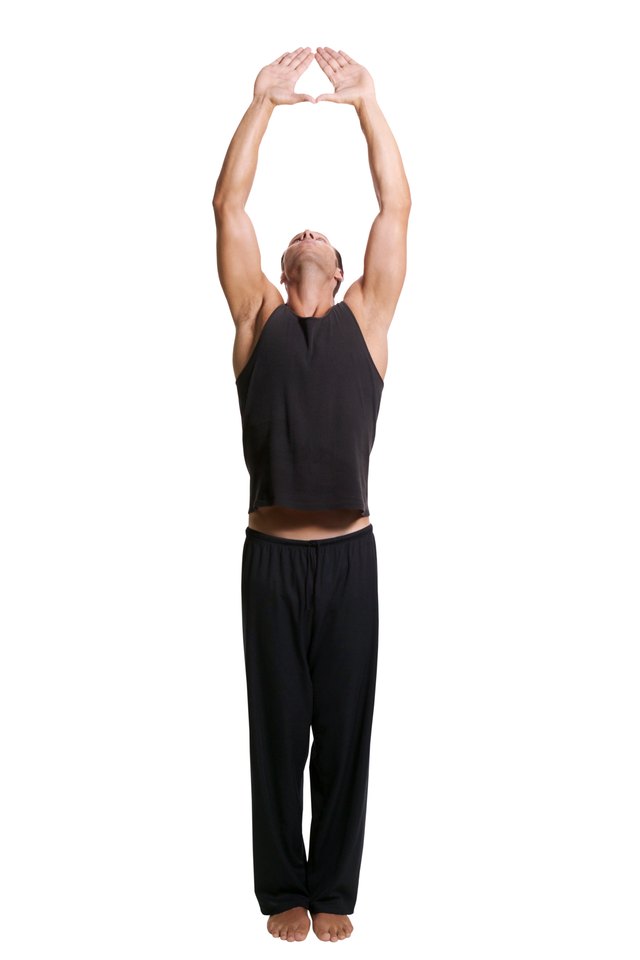Recommended Repetitions for Range of Motion Exercises

Range of motion, or ROM exercises are used to help maintain and restore range of motion, particularly for the disabled, elderly or injured. However, range of motion exercises are beneficial for everyone and can help you stretch after a workout or dynamically warm up prior to your exercise routine. Understanding how to safely perform ROM will guide you in adding these movements to your workouts. Determining the appropriate number of repetitions of your ROM will help you achieve your fitness goals.
Performing ROM
Range of motion can be performed on almost any body part including your feet, legs, pelvis, arms, hands, neck, back and abdomen. When doing ROM exercises, move the body part slowly and with a constant speed throughout the range, holding for a second at the start and end of your range. Inhale as you move away from your body and exhale as you return to the starting position.
Dynamic Pre-Workout ROM
A study published in the 2006 "Journal of Strength and Conditioning Research" showed that a dynamic warm-up routine resulted in more strength and improved performance during exercise as compared to a static stretch. This study, along with many others, indicates that you should add a dynamic, moving ROM exercise as part of your warm-up. For this type of ROM, you should exercise or move the body part for a certain duration, such as 30, 60 or 90 seconds, moving throughout the full range with no rest. This will increase the blood flow to your muscles and begin to loosen your joints. If you prefer repetitions, aim for 50 to 100 repetitions, which will take about the amount of time listed above.
Post-Workout Stretch ROM
Therapists often recommend ROM in either two sets of 10 repetitions, or one set of 20 repetitions. However, the actual number of repetitions at the end of your workout is not as important as the amount of time you spend stretching at the end of your range. When stretching, move your body part to the point where you begin to feel a stretch and hold for at least 10 seconds; hold it longer if you are particularly tight. You can also challenge yourself to hold for up to 30 seconds, exhaling and stretching just a little further after 15 seconds.
Precautions
Generally, you should only perform ROM exercises in the "pain-free range." This term is often used by therapists and medical professionals as an indication of a safe range for movement that is less likely to cause injuries. If you have limited range of motion or have pain at any point in your movement, consult with your doctor or therapist to devise an appropriate plan to address your impaired ROM and reduce your risk for injury. Discontinue any movement that causes pain.
References
- Medline Plus: Limited Range of Motion
- National Center on Health, Physical Activity, and Disability:Rheumatoid Arthritis and Exercise
- Missouri Center for Career Education: Range of Motion Exercises
- Journal of Strength and Conditioning Research: Dynamic Vs. Static Stretching Warm Up: The Effect on Power and Agility Performance
Resources
Writer Bio
Melissa Sabo is an occupational therapist who started writing professional guidebooks for all Flagship Rehabilitation employees in 2009. Specializing in applied therapy and exercise for non-medical readers, she also coauthored a manual on wheelchair positioning. She graduated from the University of Pittsburgh with a Bachelor of Science in occupational therapy.
